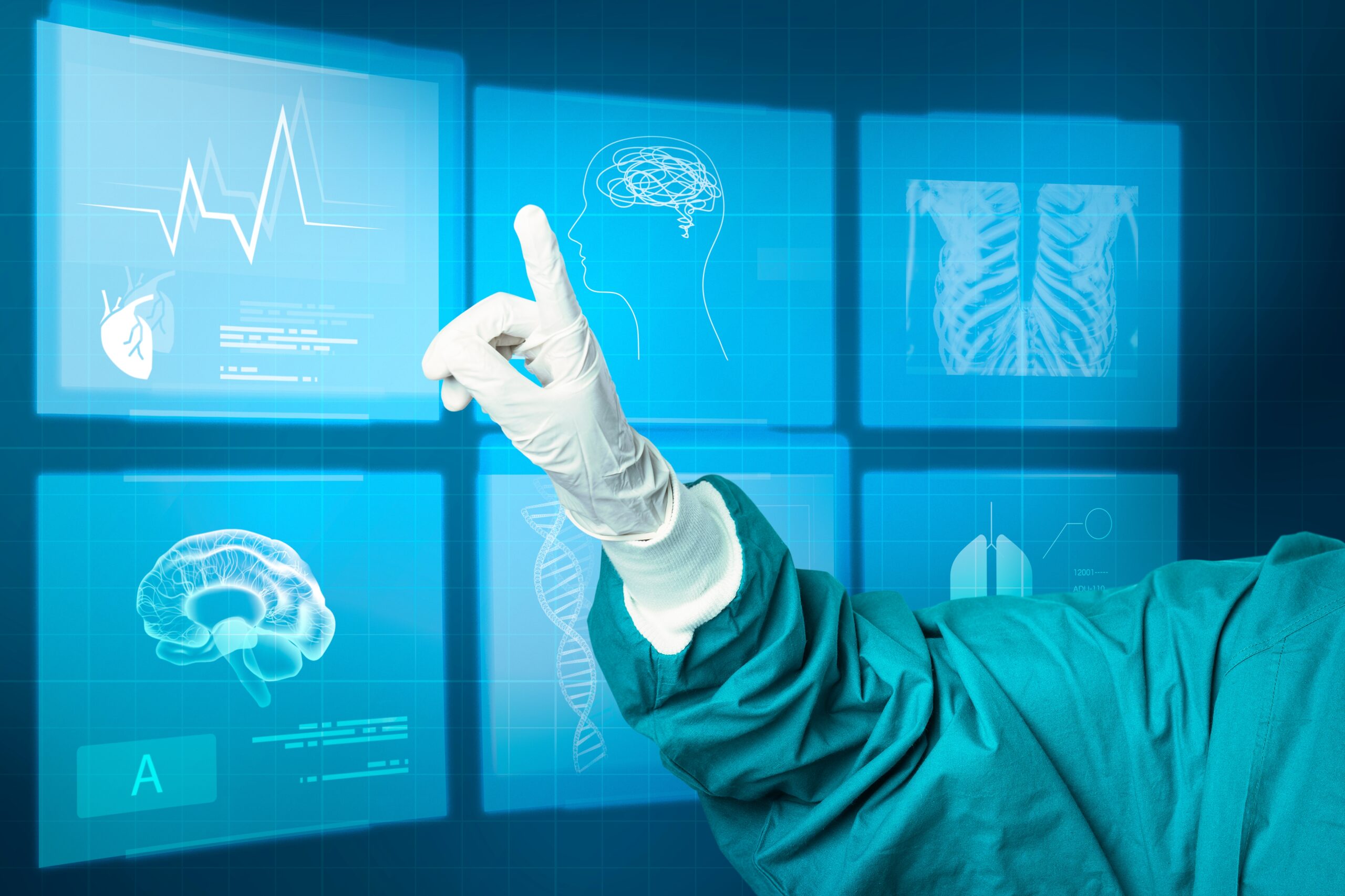
The repeating episodes of the COVID-19 pandemic have been a driving force in letting healthcare industries rethink the promptness that they need to bring in. Digital health has become essential to meet the need for better resource efficiency across the healthcare industry.
Among these transformative technologies, Edge Computing has emerged as a crucial player providing real-time processing power at the edge of the network. In healthcare, it is of utmost importance as delay in making decisions can mean life or death to their patients.
According to MarketsandMarkets, the global edge computing in the healthcare market in terms of revenue is estimated to be 12.9 USD by 2028, growing at a CAGR of 26.1% from 2022 to 2028.
In the USA, Cleveland Clinic, Stanford Health Care, and Mayo Clinic have already adopted edge computing in their healthcare services. In this blog post, we will explore the realm of Edge Computing in healthcare through five use cases that illustrate its potential to revolutionize digital health.
Connected Ambulances: Reliably Reaching Hospitals
Within the current emergency care system, paramedics are typically limited to giving emergency physicians a brief overview of the patient. Therefore, once the ambulance gets to the hospital, these patients can only get the necessary diagnostic treatments.
Patient diagnosis may be delayed as a result of these issues and delays in handover times and patient transfers to the appropriate wards. Delays of this kind can be lethal, particularly in emergencies.
Because of its low latency, mobility, and data-processing capabilities, edge computing at the network edge when paired with 5G can enable more accurate and better care for paramedics on the scene as well as transmit more precise information about the location and status of patients arriving at the hospital.
This allows emergency teams to make treatment decisions before the ambulance arrives through:
- Live streaming of heart rate from sensors and monitors or live video feeds from first responder body cams to the hospital (enabled through 5G).
- Analysis of patient vitals such as blood pressure, and heart rate at the edge for real-time diagnosis.
- Augmented reality glasses display information about patient history and complex treatment protocols to empower paramedics
- Haptic-enabled diagnostic tools like remote ultrasounds enable remote diagnostics by specialists.
In a 2023 study published in “Cybersecurity for Smart Cities”, an EDGE Supported Ambulance Management System for Smart Cities and how they are aiding patients has been described.
Hospital at Home: Remote Monitoring and Care
The healthcare system is under tremendous strain due to the rise in chronic, non-communicable diseases like diabetes, COPD, and heart diseases. In addition to improving care for an aging population and expanding patient access, remote patient monitoring may help ease some of this burden.
However, because patient data is sensitive-
- Running these apps in the cloud is frequently viewed as unsafe, which discourages the use of these solutions.
- Furthermore, some patient monitoring devices may use video to track, among other things, whether patients have fallen or if their behavior has changed significantly.
- Transmitting raw video requires a lot of bandwidth.
Sensitive information sent between a patient and a healthcare provider can be protected by processing data at the edge, such as on a camera, tablet, or network edge. The low latency features can also allow for real-time alterations, which may be crucial in the event of a possible stroke.
For instance, glucose levels can be checked regularly and the results sent to an insulin pump or other connected device to be used for insulin injections. Edge computing wearable sensors can track patients’ movements at home at all times, notifying caregivers of any changes in their conditions and enabling physicians to quickly modify treatment plans as necessary.
A 2015 study found a 50 % reduction in 30-day readmissions and up to a 19 percent decrease in 180-day readmissions among patients who received remote care. The estimates suggest that telemedicine alone could help cut U.S. employer healthcare costs by as much as $6 billion annually.
Improved Pharmaceutical Supply Chains in Hospitals
Numerous improvements to the medical supply chain will be possible thanks to edge computing. Getting up-to-date data on a drug’s location, condition, and expiration date facilitates the detection of problems like tampering and counterfeiting. In these situations, edge computing offers substantial advantages because it allows for fast data processing without relying on external resources.
Pharmaceutical industries can obtain current information about the performance of their supply chain through faster processing speeds and lower latency, enabling them to make well-informed decisions about medicine distribution and inventory levels.
All things considered; edge computing enables pharmaceutical firms to-
- Track their products in real-time along the entire supply chain.
- Guarantee that patients always receive the medicines they require at the appropriate time.
- Give precise and timely data regarding inventory levels, expiration dates, and other topics.
Pharmaceutical manufacturers are tapping into the power of Edge Computing to transform operations and achieve Pharma 4.0 initiatives.
Revolutionized Operation Theaters
Robotic surgery in hospitals is being powered by 5G networks and edge computing in many cases. Less intrusive and more accurate procedures are made possible by these systems. The addition of cameras and other sensors to surgical instruments enables robotic surgery. This data is then transmitted in real-time to a computer that processes it and guides the surgeon.
With the advent of AI-assisted surgery, edge computing and AI have also revolutionized operating rooms (OTs).
- During surgery, nurses must record all activities from the time a patient enters the operating room until the room is cleared. With the aid of cameras and edge computing devices, AI systems can automatically track and classify every action that occurs within the OT. Data from several identical surgeries can then be compiled and evaluated, allowing for more efficient operations and improved patient care.
- In laparoscopy, a minimally invasive surgery is performed in the abdomen or pelvis using small incisions. Ultra-low latency streaming of surgical video into AI-powered data processing workflows enables surgeons to focus on finding anomalies that need to be removed, making automatic measurements, tracking surgical tools, monitoring organs that need to be preserved, or detecting bleeding in real time.
Patient Data Transmission in a Secured Way
By bringing data processing closer to the data source, edge computing enables healthcare organizations to store and handle data produced by numerous connected devices, including security cameras, medical records, and sensors.
- Edge computing has significantly lowered end-to-end latency and the problems associated with limited bandwidth and data storage capacity by minimizing transmission time. Additionally, edge computing offers a safe way to store patient data, guaranteeing the confidentiality and security of sensitive data.
- Since patient data is processed on-site instead of being sent to the cloud, it’s easier to maintain HIPAA compliance and prevent interception by malicious actors without needing to use slow, buggy VPNs.
Important patient data, for instance, is not sent over long distances, where it is more susceptible to hacking. All cloud solutions are capable of doing this, but edge computing stands out in terms of security due to its decentralized data storage architecture.
To Sum up
Virtually every aspect of healthcare is starting to rely on edge computing to improve quality of life and become more connected and competitive. For Codewave, the implementation of edge computing varies from one purpose to another depending on business needs. We are here for the healthcare providers unhappy with cloud latency.
With increasing computing power at the Edge, businesses can build innovative products/services, without having to worry about Cloud connectivity & Internet speed. Near Field Communication can be exploited to deliver immersive user experiences closest to the user’s reality, which are otherwise limited because of internet constraints. Also, Edge devices open up opportunities in Clinical research and trials enabling “Decentralized Clinical Trials”, remotely testing solutions with a diverse set of patients, distributed in different geographies.
Codewave’s innovative solutions include:
- Understanding & aligning with your organization’s Digital strategy
- Assessing your product/service, your user’s behavioral change needs & conceptualizing a solution that is deeply integrated with the user’s way of life
- Assessing emerging intelligence technologies aligned with Org’s vision & strategic initiatives
- Designing & architecting intelligent solutions, with the help of cutting-edge technology
- Designing and developing a rapid prototype to test the solution, with potential users & user groups (ready for clinical trials)
- Designing & Developing the solution, for full-scale deployment and active usage
- Reviewing outcomes regularly, implementing design & technology feedback for continuous improvement of the solution
If you want to keep pace with the rapidly evolving healthcare technologies, you can contact us to explore our range of solutions driven by edge computing.
